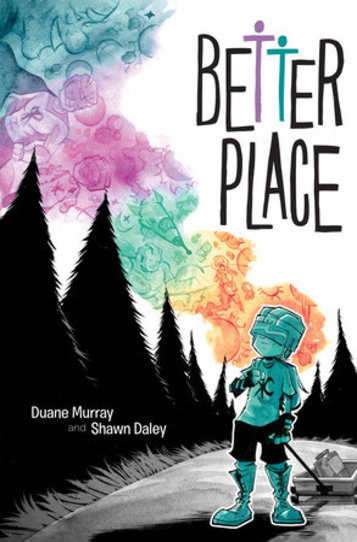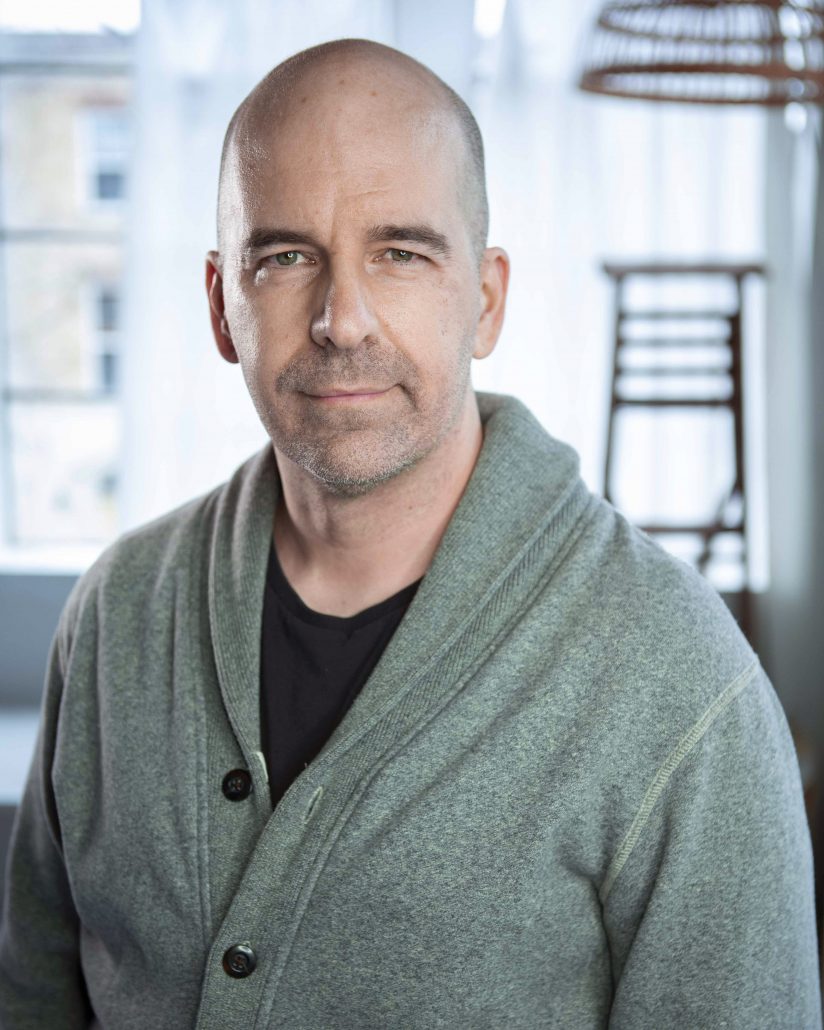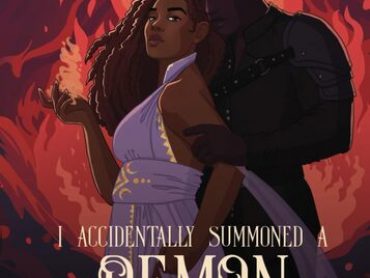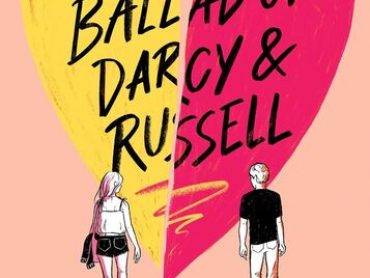Duane Murray is the author of the graphic novel Better Place. Better Place follows Dylan who just moved to a new house, with no friends, and a mother who doesn’t have time for him. The novel explores layers of emotion and sympathetic characters, including some childlike adults and some awfully mature kids. YEM was able to speak with Duane about what drew him to writing the graphic novel, where the inspiration came from, and if his characters were inspired by anyone in his real life.
Young Entertainment Mag: When did you realize you wanted to be a writer?
Duane Murray: I think I’ve always wanted to be a writer. I’ve always written. I was writing short stories in elementary school. Made (bad) comics in middle school. Wrote and filmed sketches and short films in high school. Wrote plays and screenplays in University. And now, I write just about everything. I’ve just always written. I will say that making Better Place is what made me realize I mostly want to be a writer of graphic novels. I just loved the process so much that I’d like to put my focus on writing comics and graphic novels from now on. It’s my favourite medium to write in.
YEM: What drew you to writing this graphic novel, Better Place?
Duane: This is such a long answer for me. I’ll try and keep it short. I have loved comics and graphic novels since I was a kid, but even into my late 20’s, my exposure to them was limited to superheroes. And so my own stories I wanted to tell, which were sometimes superhero influenced, but not necessarily superhero stories, coupled with not knowing how to draw, meant I gravitated more towards imagining those stories as films.
In fact, Better Place was originally being written as a very small Independant film. My best friend and I had made (and still make) really low budget films and so I came up with the idea of someone looking for a “better place” to find a loved one a long time ago. It was also kind of inspired by memories of when my Grandmother died. So he and I spent some time trying to write a movie, but I was never happy with it. It never felt true to me or… “right”. So it got shelved as other professional commitments came up. For a LONG time. Fast forward many years later and I had just finished making a film as a writer and producer, which is very collaborative across so many people, and I wanted to make something where the collaboration was more intimate, and where I had more creative control. I wanted to make decisions as opposed to just suggestions, and so I dusted this story off, approached Shawn to collaborate with because I loved his work, and went about rewriting the story to suit the graphic novel format, which just felt right.
YEM: What is the process of writing a graphic novel like?
Duane: I assume the process will be different for everyone. No matter what you are writing. In fact the process is likely even more varied for graphic novel writing, because unlike films or TV, or even novels, there isn’t any sort of universally agreed upon structure or format for writing graphic novels. Everyone has their own way, and then I am sure the process of writing even varies more depending on the artist you work with if you aren’t drawing it yourself. Then those who both write and draw likely have a process different from each other. In fact, I’m currently writing my next graphic novel/comic and it is already a different process from writing Better Place, and because I’ll be working with a different artist, that process will likely be different as well. All this to say that I am sure the process is different for everyone. The good thing about there not being any sort of agreed upon format or structure for graphic novels, is that you can pretty much figure out your own process. For me, I like to be structured and know where I am going, so I like to outline my whole story, come up with scenes within that outline, and then just work away at it. Sometimes I have very specific ideas for how some pages or images should look, and so I put more description in, and sometimes I don’t and lean a bit heavier on the artist to draw it how they see it, which I hope they like doing. I actually love the process in that sense. I should note I’m a very slow writer.
YEM: What was collaborating with the illustrator Shawn Daley like?
Duane: Wonderful. So wonderful, that I plan on doing it again. The greatest creative experience I’ve felt to this day, was getting an email from Shawn with pages he’d drawn for the book. In terms of collaborating, it was very easy. At least for me. You’d have to ask him if it was for him. I hope so. I had a story, and part of a script, and in some cases I was very specific, and in others I wasn’t. They say in directing movies, 90% of your job is casting. As a writer who had to collaborate with someone to tell my story because I can’t draw, 98% of it was finding the right collaborator (and I say collaborator, because the artist is so much more than an illustrator). So I would say just as important as the writing, is the finding of the right collaborator, not matching an artists style for the story, but also in how you work together.
YEM: Where did the inspiration for Better Place come from?
Duane: It was a combination of things. It was so long ago, but the very first thing I remember was coming out of a very small film called Gerry, and walking through a bookstore near the movie theater, and an idea coming to me about someone being told by their mother that they were going to a “better place” (because they had a terminal illness and knew they were dying), and then after the mother dies, the son wandering around asking people where a “better place” was so they could be with their mother, since they had never been without her. The inspiration also pulled from an old memory of seeing my Grandmother’s open casket at her funeral when I was younger. I just remember thinking, “I know that’s her body, but I can see she isn’t there. She’s somewhere else.” Then, over the course of years and different iterations and collaborations, the story took different forms, until eventually it resulted in the graphic novel that’s out there now.
YEM: Do you have a favorite author?
Duane: I’m not sure I do. There are certain authors whose work I always make sure to check out. Jeff Lemire in the graphic novel world. David Eggers in the novel world. Oliver Jeffers in the kids book world, but plenty of others as well. It’s just hard for me to think of absolute favorites in terms of authors. It’s easier for me to point to favorite books. For instance, Jeff Lemire’s Essex County is one of my all time favorite graphic novels, and books, and is one of the big inspirations to me for Better Place being made into a graphic novel.
YEM: Do you have any advice for those who want to become a writer?
Duane: Write. There’s nothing stopping you. Read. Read about writing. Learn to identify what you like about the writing you love to read. Rewrite. Rewrite some more. Rewrite again. Be true to your voice. Love the process of writing, because there is no way to predict the result. Write because you love writing. If people end up reading it, that’s a bonus. If people end up loving it, that’s an even bigger bonus.
YEM: What is something you hope your readers take away from reading Better Place?
Duane: I hope that reading it allows people to experience some sort of emotion. Whether they laugh, or smile, or get mad (at the characters, not ME), or cry. I just hope they experience something since they are giving up their valuable time to read it.
YEM: Which book made you fall in love with literature?
Duane: This is an interesting question, because I am not sure I can pinpoint a single book that made me fall in love with literature, but I can pinpoint certain books that made me fall in love with certainkinds of literature. Essex County made me fall in love with graphic novels that weren’t about superheroes. Oliver Jeffers’ The Heart and The Bottle made me fall in love with kids books. Each opened my eyes to the possibilities those formats can do in terms of pushing on the heart and emotion of a story.
YEM: Were your characters inspired by any people in your real life?
Duane: Not directly. I definitely have pulled bits and pieces of my life and my experiences, both for Dylan and the other characters. I think most writers do, but none of the characters really reflect anyone in my life in any real recognizable way. My Grandfather had Alzheimer’s, so that is in there, but mostly it’s just bits and pieces of my imagination, with a dash of real life inspiration to ground it.
YEM: Are you planning on writing any more graphic novels in the future?
Duane: After making this graphic novel, I fell in love with both the process of making a graphic novels as a way to tell a story, and the publishing world. Because of that I have a few stories in mind I want to tell in this way. I’m currently working on my next one, but actually want it to be made as five or six single-issue comic books before it’s eventually collected into a graphic novel. I want to try writing in that format.
YEM: How long did the process of making Better Place take?
Duane: This is an almost impossible question to answer in any sort of concrete way. I mean the very first idea came to me over 20 years ago, but it went different directions back then, and then went away for a long time, but because I get asked this question a lot, I checked out some emails between Shawn and I. I don’t know how long it took me since it was always something brewing inside me, but I wrote (or rewrote from my old story) the first 35 pages of the graphic novel and sent them to Shawn in May of 2017. Shawn was working on other projects, so couldn’t start drawing it right away. I found an email where Shawn had pencilled 25 pages in February of 2019. I sent the “finished” book to Top Shelf in February of 2020. SO that was about a year. From there, they agreed to publish it and it went through an editorial process and a production process, which took more time, and then of course the backlog in the printing world. So like I said, it’s impossible to have any sort of concrete answer. I’m just happy it’s out for the world to read. I feel like, similar to my answer about process, how long a particular book takes (or any creative pursuit) can vary a ton depending on the project. This one seemed to take forever, but once I settled on making a graphic novel, the actual “work” of it was pretty fast. Same for Shawn. Once he settled in on drawing it, he was incredibly fast.





